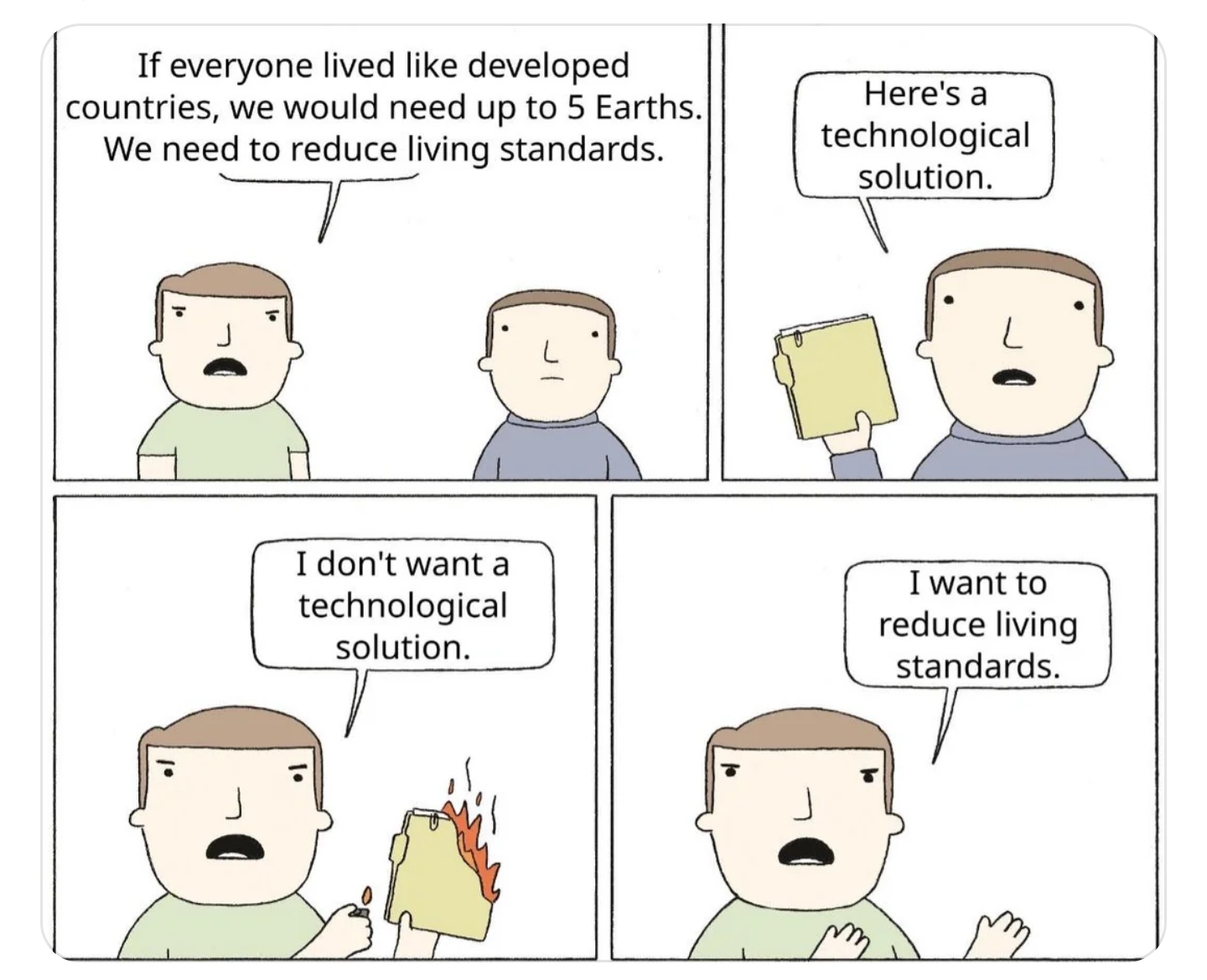this post was submitted on 03 Jul 2024
458 points (85.4% liked)
solarpunk memes
2937 readers
135 users here now
For when you need a laugh!
The definition of a "meme" here is intentionally pretty loose. Images, screenshots, and the like are welcome!
But, keep it lighthearted and/or within our server's ideals.
Posts and comments that are hateful, trolling, inciting, and/or overly negative will be removed at the moderators' discretion.
Please follow all slrpnk.net rules and community guidelines
Have fun!
founded 2 years ago
MODERATORS
you are viewing a single comment's thread
view the rest of the comments
view the rest of the comments

Some bad things take a very long time to show up though; the idea of putting the brakes on any new development until we had complete knowledge of potential bad things resulting simply isn't practical.
Lets take a really basic example: chlorofluorocarbons (CFCs). Ammonia was--and is--used a refrigerant. It was the first one that really worked, and many large-scale industrial systems still use it. It's cheap, it's very effective, and it's environmentally friendly. Unfortunately, ammonia has two problems: first, it's highly reactive with copper, so you can't have any copper in your system, and second, a leak in a refrigeration system can kill you because ammonia gas is toxic. A number of industrial accidents in the 1920s that resulted in a lot of deaths led to the search for non-toxic refrigerants. Enter CFCs; unlike ammonia, sulfur dioxide, and other early refrigerants, they're non-toxic, so a leak in your refrigerator (or the air conditioner in your car!) does risk killing you.
...Except that CFCs absolutely wreak hell on the ozone layer. They were eventually banned. HCFCs were used for a while, because those tend to break down before they get to the ozone layer, but it turns out that if they do get up there, they do more damage than the CFCs they replaced.
But we didn't know that in the 1920s. Hell, I don't think we realized that was a significant problem for 40-50 years after CFCs were in common usage. In that time, food had gotten considerably safer, because refrigerators had become common, and were now in ever home. Without CFCs, we might have never gotten to the point of refrigeration being in common usage in homes. (For reference, the house I had in Chicago was built in the 20s, and had a bricked-over window that went into the pantry. That window used to be where blocks of ice were delivered daily or weekly to an ice box.)
We're still looking for alternative refrigerants--and insulating blowing agents--that are both non-toxic, environmentally friendly, and are can be made cheaply enough to realistically replace the current generation of refrigerants.